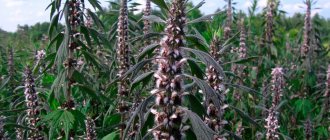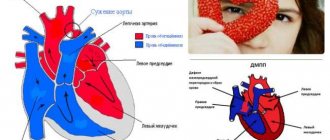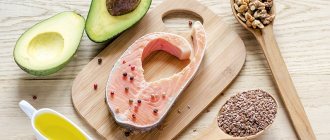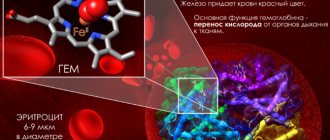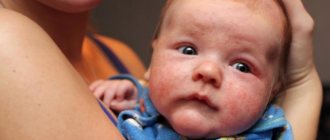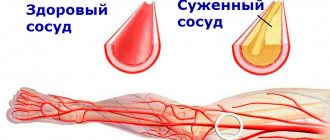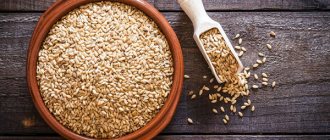Cardiovascular diseases are at the top of the list of causes of death. Often people don't pay much attention to taking care of their heart until problems arise. However, the number of strokes and heart attacks recorded in young people is steadily increasing.
Therefore, it is important to take care of the health of the heart and blood vessels in a timely manner, strengthen them through physical activity and proper nutrition.
Why do you need to train your heart and blood vessels?
Physical activity has a healing effect on the body:
- Normalizes body weight.
- Serves as a prevention of cardiovascular pathologies.
- Reduces blood pressure and triglyceride levels.
- Reduces the amount of C-reactive protein, which causes inflammation in the body.
- Regulates blood sugar and insulin levels.
- The force of heart contractions during exercise increases, thus training it.
Vessels suffer from constant stress, poor environment, and irregular nutrition. As a result, blood pressure rises and the cardiovascular system is stressed. The current situation cannot be corrected with medications alone; it is important to improve blood circulation, including in the capillaries.
Sources
- Chen W., Bian W., Zhou Y., Zhang J. Cardiac Fibroblasts and Myocardial Regeneration. // Front Bioeng Biotechnol - 2021 - Vol9 - NNULL - p.599928; PMID:33842440
- Deng M., Chen W., Wang H., Wang Y., Zhou W., Yu T. The disappearance of IPO in myocardium of diabetes mellitus rats is associated with the increase of succinate dehydrogenase-flavin protein. // BMC Cardiovasc Disord - 2021 - Vol21 - N1 - p.142; PMID:33731005
- Ikeda G., Santoso MR., Tada Y., Li AM., Vaskova E., Jung JH., O'Brien C., Egan E., Ye J., Yang PC. Mitochondria-Rich Extracellular Vesicles From Autologous Stem Cell-Derived Cardiomyocytes Restore Energetics of Ischemic Myocardium. // J Am Coll Cardiol - 2021 - Vol77 - N8 - p.1073-1088; PMID:33632482
- Villa Del Campo C., Liaw NY., Gunadasa-Rohling M., Matthaei M., Braga L., Kennedy T., Salinas G., Voigt N., Giacca M., Zimmermann WH., Riley PR. Regenerative potential of epicardium-derived extracellular vesicles is mediated by conserved miRNA transfer. // Cardiovasc Res - 2021 - Vol - NNULL - p.; PMID:33599250
- Alagarsamy KN., Mathan S., Yan W., Rafieerad A., Sekaran S., Manego H., Dhingra S. Carbon nanomaterials for cardiovascular theranostics: Promises and challenges. // Bioact Mater - 2021 - Vol6 - N8 - p.2261-2280; PMID:33553814
- Liu X., De la Cruz E., Gu X., Balint L., Oxendine-Burns M., Terrones T., Ma W., Kuo HH., Lantz C., Bansal T., Thorp E., Burridge P ., Jakus Z., Herz J., Cleaver O., Torres M., Oliver G. Lymphoangiocrine signals promote cardiac growth and repair. // Nature - 2021 - Vol588 - N7839 - p.705-711; PMID:33299187
- Stępniewski J., Tomczyk M., Andrysiak K., Kraszewska I., Martyniak A., Langrzyk A., Kulik K., Wiśniewska E., Jeż M., Florczyk-Soluch U., Polak K., Podkalicka P., Kachamakova-Trojanowska N., Józkowicz A., Jaźwa-Kusior A., Dulak J. Human Induced Pluripotent Stem Cell-Derived Cardiomyocytes, in Contrast to Adipose Tissue-Derived Stromal Cells, Efficiently Improve Heart Function in Murine Model of Myocardial Infarction. // Biomedicines - 2021 - Vol8 - N12 - p.; PMID:33297443
- Xu D., McBride E., Kalra K., Wong K., Guyton RA., Sarin EL., Padala M. Undersizing mitral annuloplasty alters left ventricular mechanics in a swine model of ischemic mitral regurgitation. // J Thorac Cardiovasc Surg - 2021 - Vol - NNULL - p.; PMID:33288234
- Regard S., Rosa D., Suppan M., Giangaspero C., Larribau R., Niquille M., Sarasin F., Suppan L. Evolution of Bystander Intention to Perform Resuscitation Since Last Training: Web-Based Survey. // JMIR Form Res - 2021 - Vol4 - N11 - p.e24798; PMID:33252342
- Ruan Y., Zeng J., Jin Q., Chu M., Ji K., Wang Z., Li L. Endoplasmic reticulum stress serves an important role in cardiac ischemia/reperfusion injury (Review). // Exp Ther Med - 2021 - Vol20 - N6 - p.268; PMID:33199993
A set of exercises for training the heart
There are quite a lot of exercises that involve cardio. The following will benefit you: running, cycling 30 minutes a day, jumping rope, swimming, aerobics, dancing, yoga. It’s also a good idea to walk for at least 20 minutes in the evening, avoid using the elevator, and walk to and from work.
Basic training rules:
- Do not bring your heart rate above 130 beats per minute (optimally 120-130).
- The duration of the lesson should be no more than 60 minutes. (for problems with blood vessels – half an hour).
- Alternate exercise and rest days (it is enough to exercise 2-3 times a week).
- Include running as part of your heart training. It is enough to run 3-4 times a week for 20 minutes. It is important to pay attention to your condition.
- If discomfort occurs, it is better to take up walking.
The following exercises are effective for training the heart and blood vessels, which must be performed without sudden movements:
- When you wake up, raise your arms and legs. Shake them for about 2 minutes. Thanks to this exercise, lymph is redistributed, with its help the body removes waste and toxins. Before going to bed, it is recommended to repeat the vibration of the limbs.
- Swing your legs: lift your left leg to your right hand and vice versa.
- Rotate your arms in different directions (right forward, left backward).
- Crouch next to the door. To do this, hold on to the handles, your knees should be in line with your toes. At first, 5-10 squats are enough, gradually increasing to 100 or more. During the first lessons you do not need to squat deeply, 25-30 cm is enough, after 30 days - deeper. Exercise strengthens the heart muscle, legs and spine.
- Walk on your toes, raising your knees high.
It is good to perform leg movements while lying on your back, imitating riding a bicycle. In the same position, perform scissor-like movements with your legs, holding them at a height of 30-40 cm from the floor.
It is important to do exercises regularly, gradually increasing the load. After classes, be sure to do relaxing exercises: the muscles should increase, the heart and blood vessels should strengthen.
In order for blood to move upward through the veins more intensely, you need to train the leg muscles. For example, using Nordic walking. Steps should be rhythmic, natural, accompanied by the work of arms and legs.
In order to strengthen the blood vessels of the legs, bend forward, keeping the legs straight. It is advisable to touch the floor with your fingers. Slow running is beneficial. It's good to exercise in the fresh air.
To restore blood circulation, it is important to strengthen the neck muscles, as they are often tense, put pressure on the blood vessels, and interfere with normal blood circulation. Rotate your head in each direction for 2-3 minutes, bend forward, simulating chopping wood.
Drink in moderation
Scientists are still undecided about how alcohol affects our hearts. Some studies suggest that alcohol may cause a slight increase in good cholesterol levels.
However, the argument is that you can get the same benefits from exercise and eating fruits and vegetables without the potential negative side effects that come with drinking alcohol.
Currently, it is recommended that men limit themselves to one or two glasses of low-alcohol drinks per day, and women - no more than one glass per day.
What heart rate is considered normal during training?
To ensure that exercise does not cause harm, it is important to monitor your heart rate. The maximum frequency can be calculated using the formula: 220 – human age. Improvement of the heart and respiratory system occurs at a pulse equal to 50-60% of the maximum value.
An increase in heart rate to 80% of the maximum involves the involvement of a large number of vessels in the process, increased ventilation of the lungs, and an increase in the size of the heart.
Training at a heart rate of 90% of the maximum is permissible only in healthy people and under the supervision of a doctor.
Blood pressure control
You can measure your blood pressure at home using a tonometer. Previously, blood pressure was considered to be 140/90 as the upper limit of normal; now 130/80 is considered hypertension, and normal is 120/80. If the excess is small, it can be managed without medication by changing your lifestyle. First of all, this means giving up bad habits and caffeine abuse. Also, to normalize blood pressure, it is important to avoid overload and get enough sleep. If these measures do not lead to the desired result, you must consult a doctor to select drug therapy. Such drugs are designed to be taken regularly, which helps keep blood pressure under control and thereby improve heart function.
Auxiliary products for strengthening the heart muscle
Exercise alone will not be enough to maintain heart muscle health. It is important to provide the body with vitamins and minerals. You can use pharmaceutical drugs or use traditional medicine.
Among medications, Panangin, which contains potassium and magnesium, supports the heart muscle. Its purpose is to improve metabolic processes, prevent premature aging of the myocardium, the development of atherosclerosis, high blood pressure and arrhythmia.
A diet aimed at heart health should include: spinach, lentils, oatmeal, flaxseed oil, bananas, pomegranates, dried fruits, nuts, fish oil.
At home, you can prepare a healing mixture of dried apricots, figs, honey, raisins, walnuts and lemon with peel. Take 250 g of each ingredient, chop and mix. Store in the refrigerator, consume one tablespoon three times a day.
An auxiliary remedy can be an infusion of lemon balm, birch leaves, St. John's wort (10 g of each herb) and fireweed (30 g). Pour one tablespoon of the mixture into 300 ml of boiling water, leave and take 200 ml three times a day.
Swap fats for healthy ones
We tend to think that a heart-healthy diet means a low-fat diet, but that's not entirely true. It is known that not all fats are equally healthy.
What specific fats are essential for heart health?
Saturated fats, which are most often found in beef and dairy products, should be limited, and artificial fats, which are found in fried foods, fast foods and packaged store-bought snacks, should be avoided as much as possible.
Replace bad fats with healthy foods containing heart-healthy unsaturated fats, such as avocados, nuts, flax seeds, olive oil and fatty fish such as salmon.
Advice:
Aim to keep your saturated fat intake to 10% of your daily calories.
Quit smoking
It is now known that many different chemicals contained in tobacco smoke have very negative effects on the heart. But smoking also reduces the oxygen supply to the human body and causes constriction of blood vessels, which can also be bad for the myocardium.
Simply cutting down or switching to low-tar or low-nicotine cigarettes is not enough to significantly reduce your risk of developing cardiovascular disease. And e-cigarettes don't do any favors either. In fact, e-cigarettes still put people at risk of heart attack, according to the American College of Cardiology.
However, when a person quits smoking, the risk of developing cardiovascular disease begins to decline immediately and declines rapidly within the first year.
Causes of cardiovascular pathology after coronavirus
Initially, it was assumed that Covid exclusively affects lung tissue, and that numerous associated complications are only a consequence of hypoxia and a severe inflammatory process. However, as the pathogenesis of SARS-CoV-2 was studied, it was proven that the spread of the virus in the body occurs due to the interaction of the virion with angiotensin-converting enzyme type 2 (abbreviated as ACE2 or ACE2) - a membrane protein that is present in almost all tissues of the body.
By binding to ACE2, the causative agent of the new coronavirus infection irreversibly disrupts the vital activity and, as a result, the functions of certain cells, which explains the variability of the clinical picture of the disease:
- temporary lack of sense of smell due to damage to the nervous system, it is assumed that COVID-19 is the cause of depression and obsessive thoughts of suicide;
- specific pneumonia, which is usually not detected by radiography, but the “classic” “ground glass” pattern is clearly visible on the tomogram;
- diarrhea and nausea due to damage to the mucous membrane of the digestive tract;
- pyelonephritis, exacerbation or manifestation of glomerulonephritis with pathological changes in renal tissue, etc.
Receptors sensitive to SARS-CoV-2 are also found in the vascular endothelium. The virus has a direct damaging effect on blood vessels, which provokes:
- the formation of atherosclerotic plaques, which is especially dangerous against the background of impaired rheological properties of blood and a tendency to thrombosis;
- autoimmune inflammatory process;
- impaired vasodilation, increased tone of the vascular wall and, accordingly, hypertension (up to a critical level).
This is dangerous for a healthy person, but the risk of fatal complications is especially high in such cases:
- elderly age;
- male gender (experts believe that in men the concentration of ACE2 in tissues is higher);
- concomitant cardiovascular diseases (experts are still arguing about the safety of using some antihypertensive and antiarrhythmic drugs with a confirmed diagnosis of covid);
- overweight;
- diabetes;
- concomitant autoimmune diseases.
In addition, some drugs used for treatment also have a cardiotoxic effect. Doctors are well aware of the risk of side effects, but such drugs are prescribed in cases where the potential benefits clearly outweigh the possible adverse reactions.
Get a furry friend
Bringing a dog into your home can actually benefit your heart health. For heart attack and stroke survivors in particular, dog ownership was soon associated with better heart health and longer life, according to a meta-analysis published in October 2021, Circulation: Cardiovascular Quality and Outcomes.
Dog owners are more likely to engage in heart-healthy activities, including increased exercise and a healthier diet. Owning a dog usually leads to more frequent walking or running, which can create a domino effect with other healthy lifestyle options.

